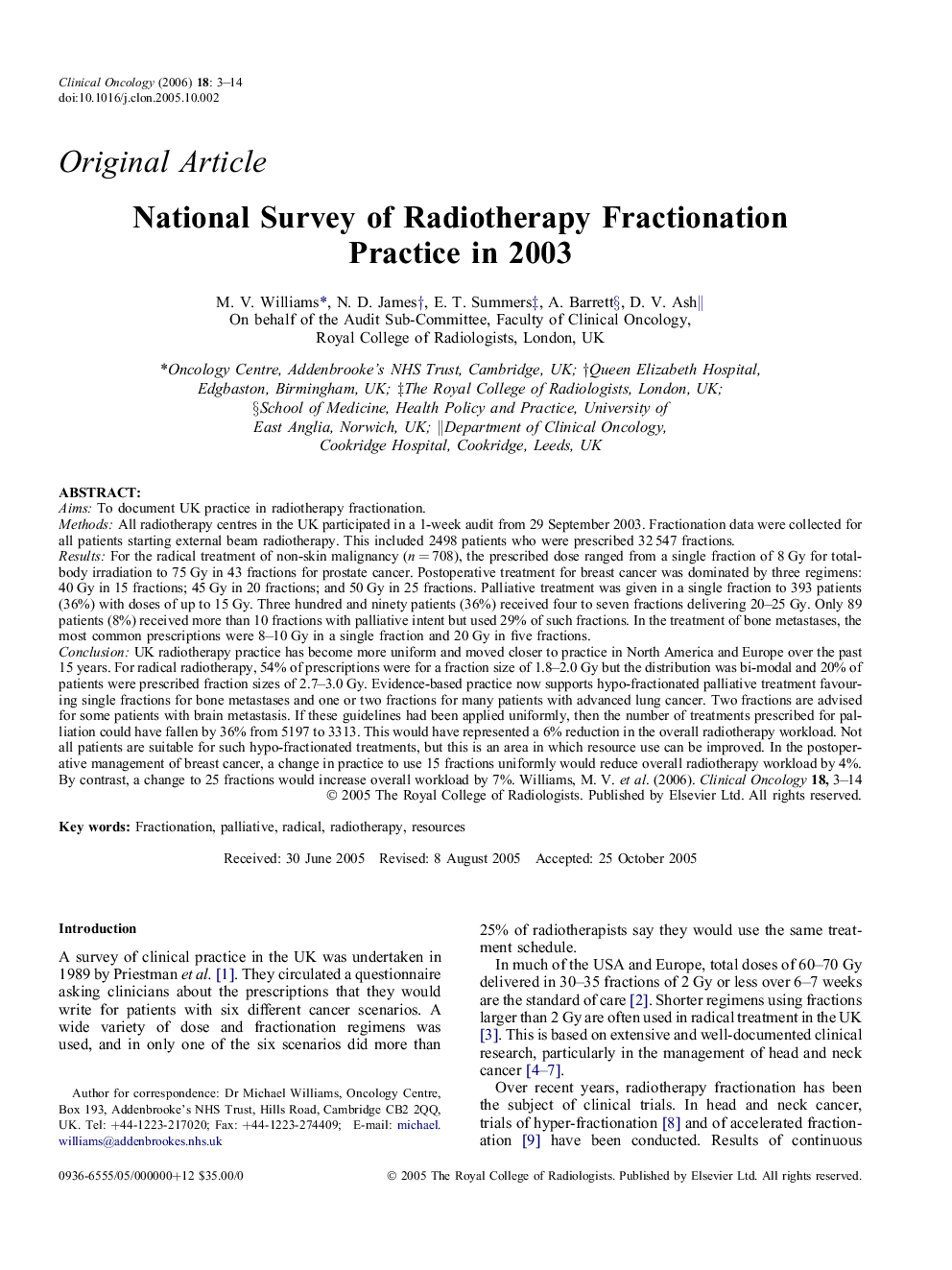| Article ID | Journal | Published Year | Pages | File Type |
|---|---|---|---|---|
| 5700190 | Clinical Oncology | 2006 | 12 Pages |
Abstract
UK radiotherapy practice has become more uniform and moved closer to practice in North America and Europe over the past 15 years. For radical radiotherapy, 54% of prescriptions were for a fraction size of 1.8-2.0Â Gy but the distribution was bi-modal and 20% of patients were prescribed fraction sizes of 2.7-3.0Â Gy. Evidence-based practice now supports hypo-fractionated palliative treatment favouring single fractions for bone metastases and one or two fractions for many patients with advanced lung cancer. Two fractions are advised for some patients with brain metastasis. If these guidelines had been applied uniformly, then the number of treatments prescribed for palliation could have fallen by 36% from 5197 to 3313. This would have represented a 6% reduction in the overall radiotherapy workload. Not all patients are suitable for such hypo-fractionated treatments, but this is an area in which resource use can be improved. In the postoperative management of breast cancer, a change in practice to use 15 fractions uniformly would reduce overall radiotherapy workload by 4%. By contrast, a change to 25 fractions would increase overall workload by 7%.
Related Topics
Health Sciences
Medicine and Dentistry
Oncology
Authors
M.V. Williams, N.D. James, E.T. Summers, A. Barrett, D.V. Ash, On behalf of the Audit Sub-Committee, Faculty of Clinical Oncology, Royal College of Radiologists, London, UK On behalf of the Audit Sub-Committee, Faculty of Clinical Oncology,
